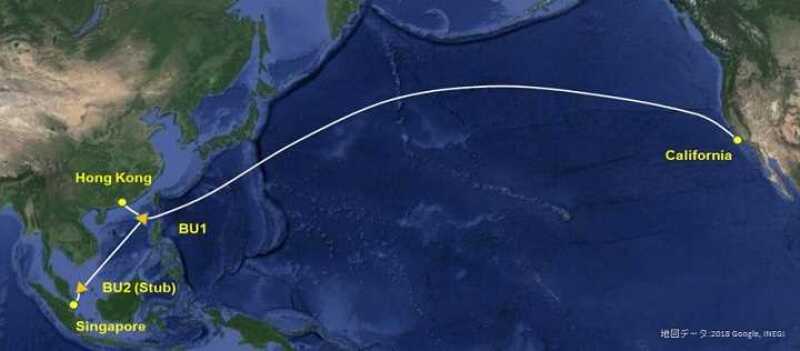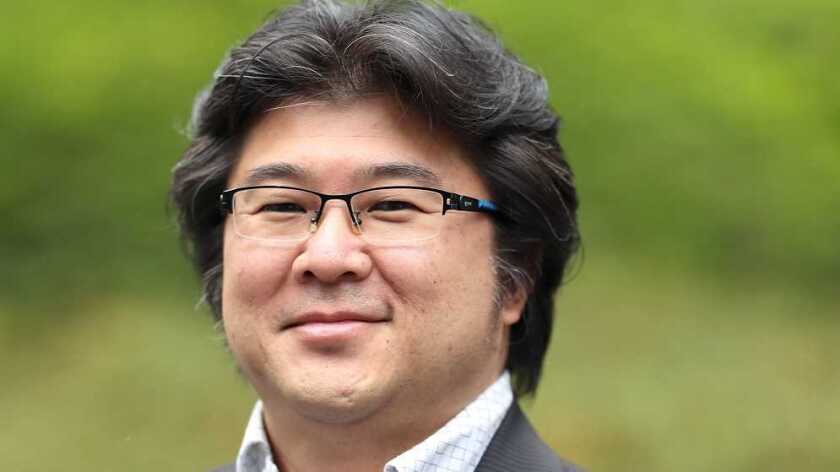Atsushi Kuwahara, senior manager, head of sales & marketing for NEC’s submarine network division has been with the company for almost 25 years and is considered a thought-leader in his field.
Unsurprisingly the biggest talking point in the sector is the OTTs, something that Kuwahara views as the biggest opportunity for NEC in the market because as he puts it, content players are primarily concerned with how to reduce their cost per bit.
“In order to meet that market demand NEC have developed new types of commercial products which can reduce the cost per bit,” explains Kuwahara. “For a long time the maximum you could have was 8-fibre pair but NEC has developed aa 16 fibre-pair cable system. We believe that these higher fibre-pair cable systems can meet the demand of OTTs to lower their cost per bit.”
He also says that the company has been hard at work continuing to meet accelerating capacity demands and that NEC is “well prepared to continue serving those needs to the market” adding that it has also made investment in increasing its manufacturing capabilities by 50%.
Continuing on his thoughts about the OTTs, Kuwahara says that although their entry to the market has changed things on the carrier side of things, for NEC it has only added another customer profile to its list of potential collaborators.
“For NEC this hasn’t changed much from our perspective, it’s only added to the different types of customers we can work with, which are telco, private owners and OTTs,” he says.
The company is already hard at work on a number of mixed consortia subsea projects. One of the most recent being the Bay to Bay Express project connecting US to Singapore. The 15,600km system, which holds the world record for the longest direct connection, has Facebook as one of the consortium partners along with China Mobile and Amazon Web Services.

However, Kuwahara still believes that these projects can still happen without the participation of the OTTs adding, “We are still working on projects that are based on the traditional telco consortia model”.
Another trend affecting the industry at large is cable landing station versus data centre debate; one that Kuwahara thinks depends on the purpose of the system and who’s building it.
“We know that traditionally the customer was telcos who were basically connecting landing station to landing station,” he says. “Now with the new players, the OTTs, they prefer to connect their submarine cables data centre to data centre. They still all exist for the time being at least.”
As our conversation turned to new trends and emerging technologies the topic of 5G enviably came up and like me, Kuwahara also acknowledges that submarine cables will pay a key part of that as data consumption grows. After all, there is no Internet without the infrastructure to deliver it.
“In order to prepare for 5G telcos need the infrastructure for 5G,” explains Kuwahara. “There is more data they have to treat, so each will require more capacity. In order to realise the 5G market – infrastructure is necessary. They need more subsea, more capacity and more connectivity”
Aging subsea cables is one of the key drivers of new system projects, one such solution that has been discussed in the industry is this idea of building cheaper cables with shorter lifespans (5-15years) to encourage investment and remove the financial barrier to market.
Speaking to Kuwahara about this trend he doesn’t see it a viable solution that the market needs.
“15-25 years in a cable lifespan isn’t much of a difference, It’s pretty much the same,” he says. “Most customers want to be sure that their cable system can be used for at least 20-25 years, and that it will last.”
Also thanks to the latest next-gen technologies, Kuwahara says there are now ways to extend the life of these systems and make them last longer.
The only other drivers of new subsea cable projects are that of latency, capacity and route diversity – drivers that once again Kuwahara says varies with the different type of customer.
“Private and financial institutions care more about the latency, telcos more so about the capacity and OTTs route diversity,” he continues.
Regardless of the customer, NEC has been hard at work as of late partnering with telcos, private owners and OTTs on a slew of new cable systems.
One of the more recent announcements being that the Okinawa Cellular Telephone Company selected NEC to design, engineer, and build a subsea system connecting the island of Okinawa with Kagoshima, Japan.
“Up till now there have been only two subsea cables connecting Okinawa to mainland Japan – this will be a new route connecting the western side of Okinawa to mainland Japan. This route will bring added diversity,“ explains Kuwahara.

But that’s not all, the rest of 2019 is looking equally as busy the company is also hard at work on its Southeast Asia -Japan Cable 2, connecting more than 10 countries across Asia.
“We are also working on the Japan –Guam –Australia Cable System. This is one of our private projects, its owned by RTI – a US private company,” Kuwahara says. “We’re also working with RTI on their Hong Kong–Guam Cable System but this system is also in partnership with Google.”
Outside of its Asia market NEC have also been working on routes in the Atlantic. Last year it completed the South Atlantic Cable System (SACS) - A new route linking South America to Africa.
And new for 2019, the company is developing an exciting new project in the Indian Ocean called CANI (Chennai and the Andaman & Nicobar Islands). It’s the first project linking these specific islands and a new route for Chennai.
NEC is showing no signs of slowing down and with new technologies ushering in even bigger data demands, don’t expect that change anytime soon – and to honest Kuwahara would have it no other way.
“We are undertaking projects on a global basis and we are active in every ocean.”





